Fire Detection System
 Addressable Fire Alarm System
Addressable Fire Alarm System Conventional Fire Alarm System
Conventional Fire Alarm System Fire Detection Devices
Fire Detection Devices Linear Heat Detection System
Linear Heat Detection System Aspiration System
Aspiration System
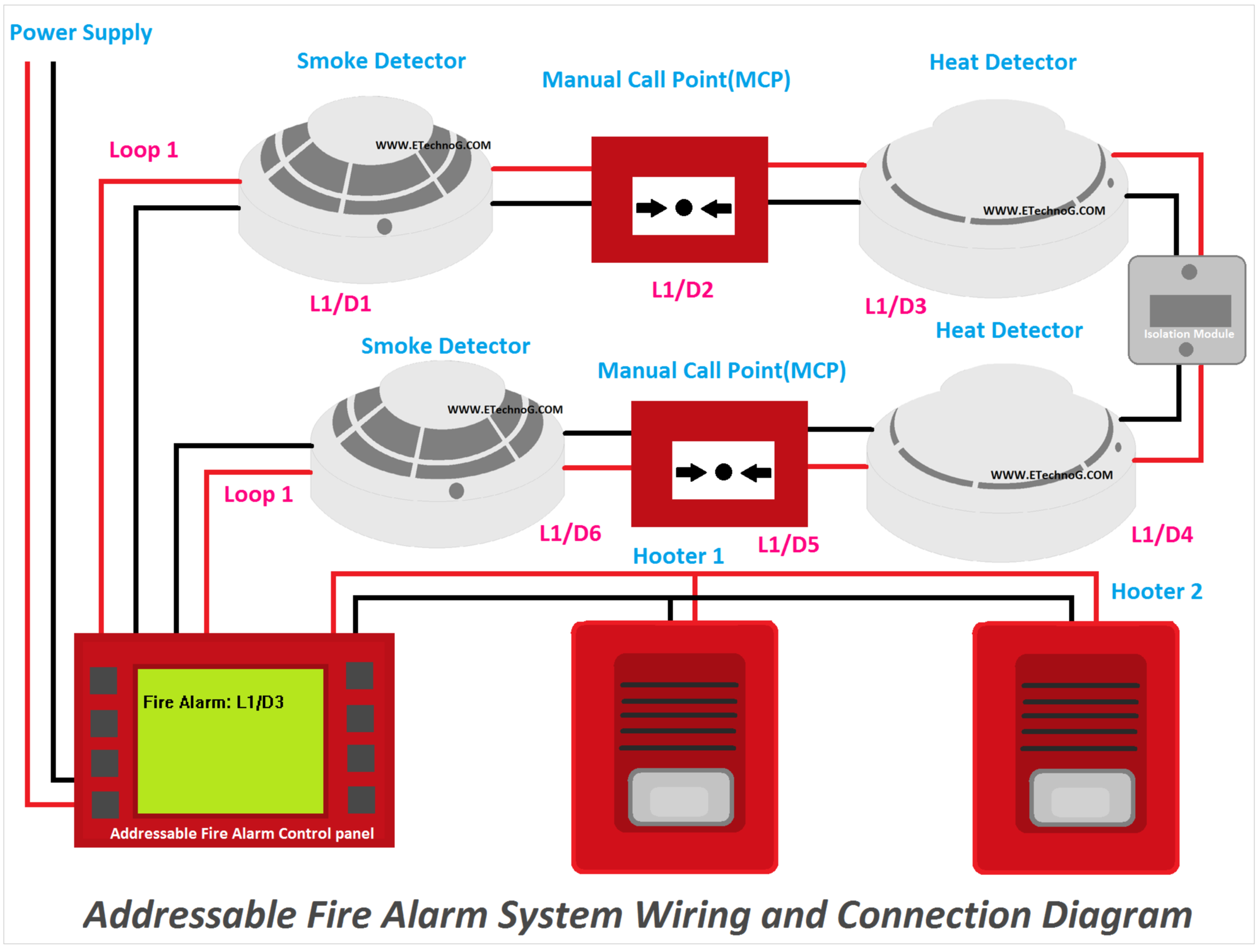
Addressable Fire Alarm System
An addressable fire alarm system operates by having every detection & notification device connected to the fire control panel. Each signalling device has its own address. This operation allows the fire alarm system to transfer information to the control panel with a wide range of information. The most important part of an addressable fire alarm system is that it pinpoints the exact location of fire or smoke, thus providing a high level of reliability and safety. The technology in the addressable fire alarm system immediately notifies the fire authorities of the fire and its location so that they can respond swiftly.
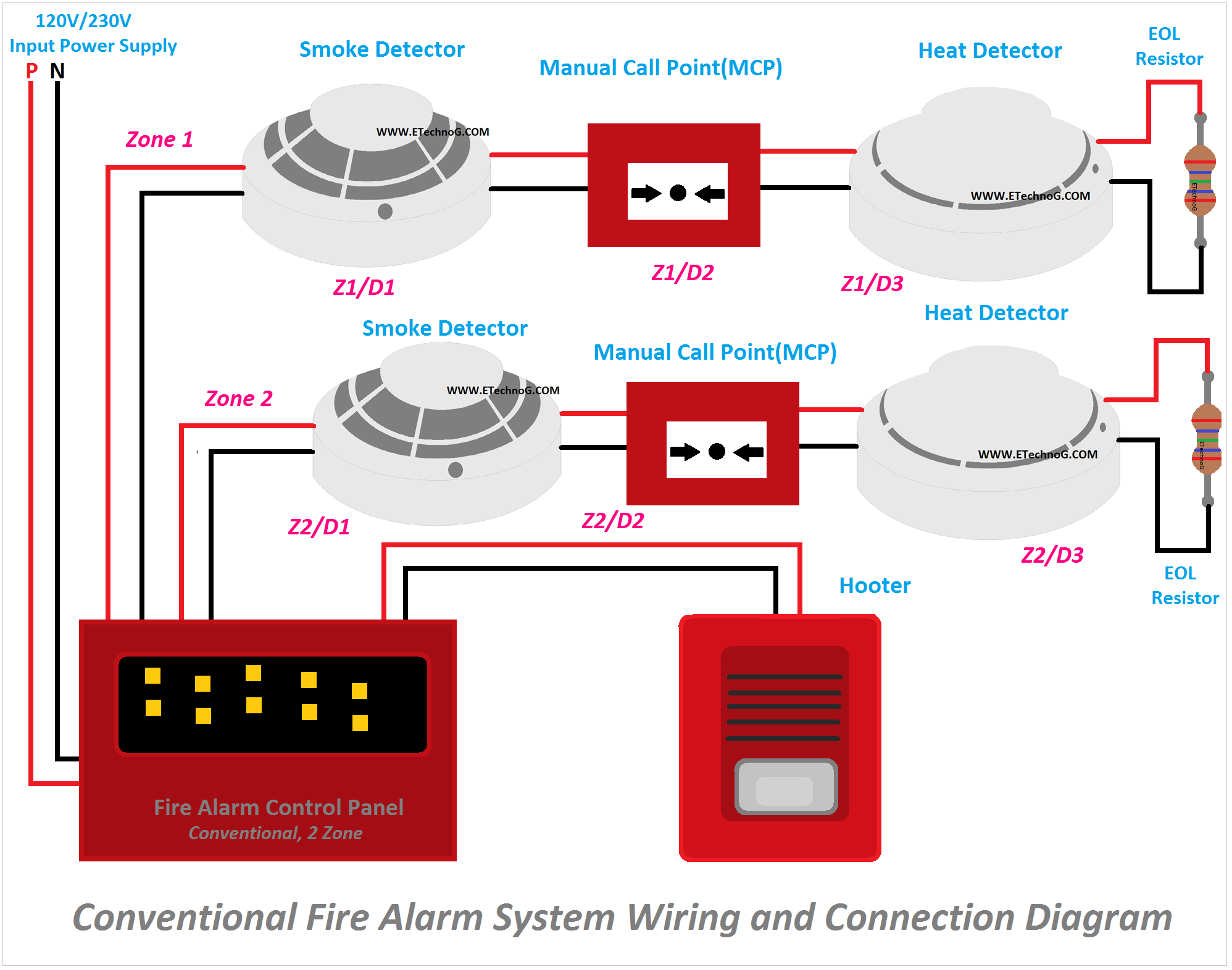
Conventional Fire Alarm System
A conventional fire alarm system (also referred to as a 4 wire system) consists of automatic detectors and manual call points wired to the fire alarm control panel in Zones. Each Zone is a physical wiring circuit. The fire alarm control panel has a number of Zone LEDs which will illuminate should a device in that zone be activated. The purpose of Zones are to provide an indication of where a fire has been detected. The control panel is then wired separately to a minimum of two sounder circuits which accommodate the systems audible warning devices (e.g. bells, electronic sounders etc). Each detection circuit and sounder circuit has an end of line device (resistor) for monitoring purposes
Fire Detection Devices
A fire detector is a device that detects the presence of a fire. This can be done in several ways, including the following:
 Fire Alarm Control panel
Fire Alarm Control panel Smoke Detector
Smoke Detector Heate Detector
Heate Detector Multi Sensor
Multi Sensor Flame Detector
Flame Detector Probe Heat Detector
Probe Heat Detector Beam Detector
Beam Detector Manual call points
Manual call points Sounder with Flasher
Sounder with Flasher
Fire Alarm Control panel
An FACP is the “brain” of the fire alarm system to which all other devices are connected. When an initiating device (such as a smoke detector or a manual pull station) transmits an alarm signal to the FACP, it activates the notification devices to alert the occupants via audible and visual alarm devices.
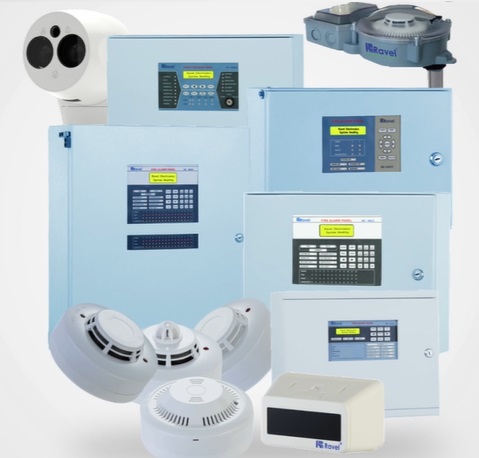

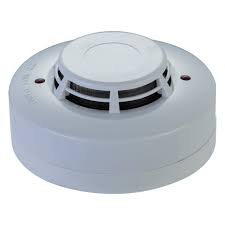
Smoke Detector
A smoke detector is an electronic fire-Detection device that automatically senses the presence of smoke, as a key indication of fire, and send the signal to the control panel.
Heate Detector
A heat detector is a fire alarm device designed to respond when the converted thermal energy of a fire increases the temperature of a heat sensitive element.
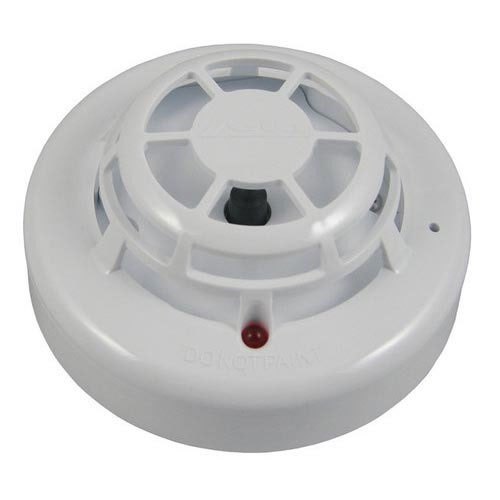
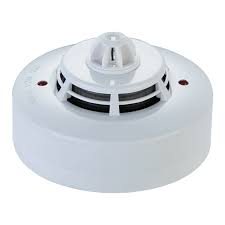
Multi Sensor
Multi-sensor Detectors are a combined optical smoke and heat detector allowing flexibility in the detection of fires. Using the combined detection method a fire condition can be confirmed if both heat and smoke sensors operate. These Detectors are general purpose detectors which respond well to a wide range of fires.
Flame Detector
A flame detector is a sensor designed to detect and respond to the presence of a flame or fire. There are four primary optical flame-sensing technologies in use today: ultraviolet (UV), ultraviolet/infrared (UV/IR), multi-spectrum infrared (MSIR), and visual flame imaging. They are all based on line-of-sight detection of radiation emitted in the UV, visible, and IR spectral bands by flames



Probe Heat Detector
Probe Type Heat Detector works as a temperature-regulated switch, which switches ON/OFF (Automatic) as the temperature reaches the set point.
Beam Detector
An optical beam smoke detector is a device that uses a projected beam of light to detect smoke across large areas, typically as an indicator of fire. They are used to detect fires in buildings where standard point smoke detectors would either be uneconomical or restricted for use by the height of the building.



Manual call points
Manual call points, often known as 'break-glass' call points, enable a person who discovers a fire to operate the fire warning system and immediately raise the alarm to warn other people in the premises. Manual call points are normally positioned at exit doors.
Sounder with Flasher
The Sounder with Flasher is a kind of audible and visual alarm device used to warn people in field when fire occurs. It can give audible and visual alarm when applied to I/p power. To connect it with fire alarm control panel, an addressable control module (Addressable Single I/O Module) should be added to the system.
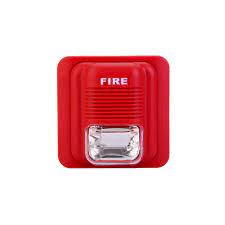

Linear Heat Detection System
Linear Heat Detection (LHD) is a continuous heat detector designed to detect heat along the length of a sensor cable. This sensor cable is made up of two conductors, both insulated by heat sensitive polymers. The heat sensitive polymer is protected by an outer jacket.
Aspiration System
Aspirating smoke detection (ASD) is one of the quickest and most reliable detection types on the market today. Based around a central detection unit, it uses powerful fans to draw samples of air from the protected area into a detection chamber, via a network of sampling pipes.
